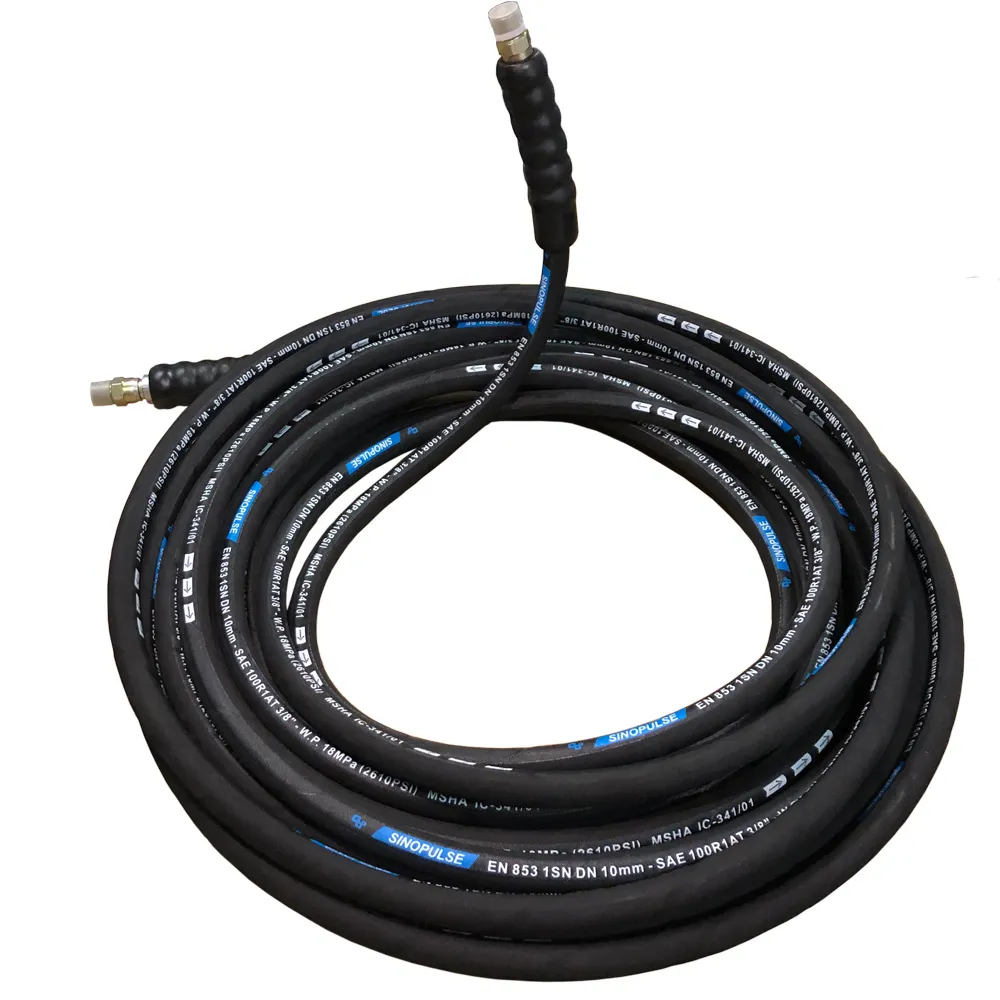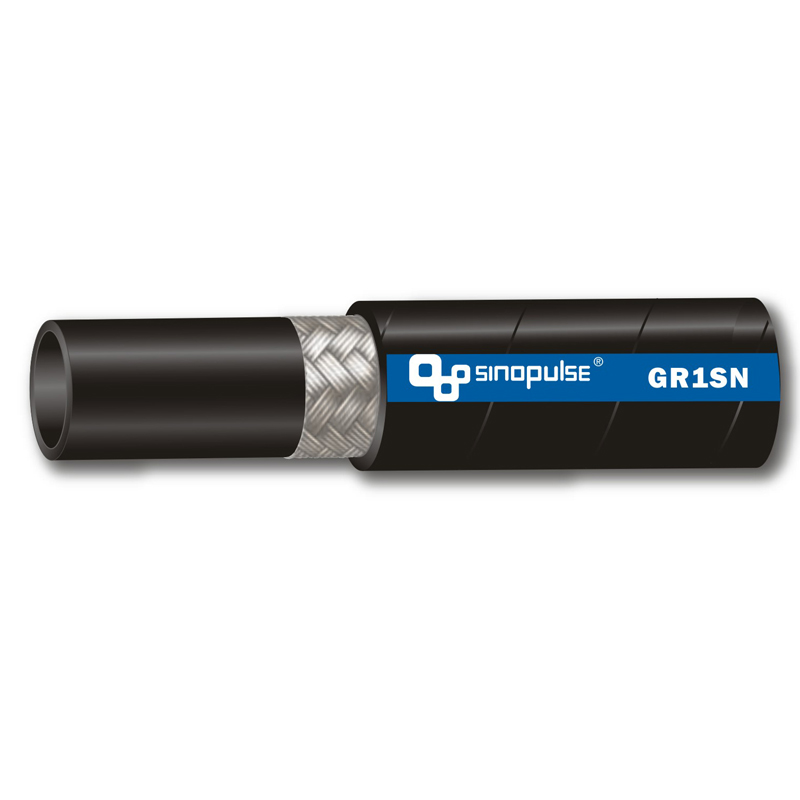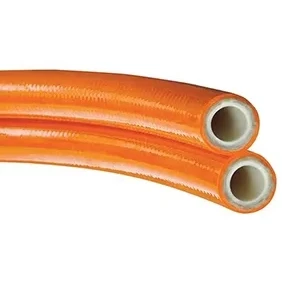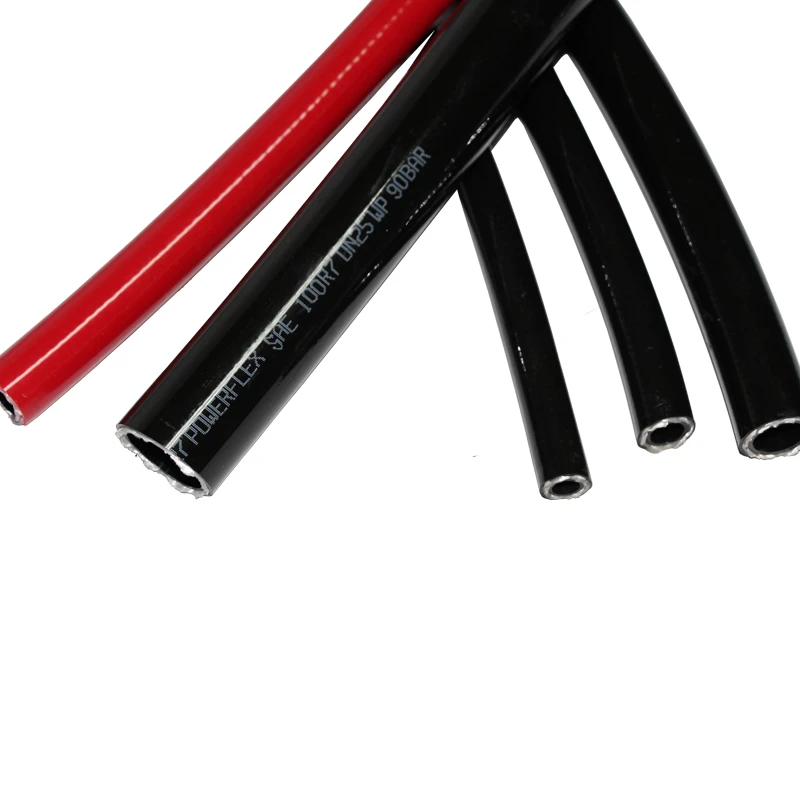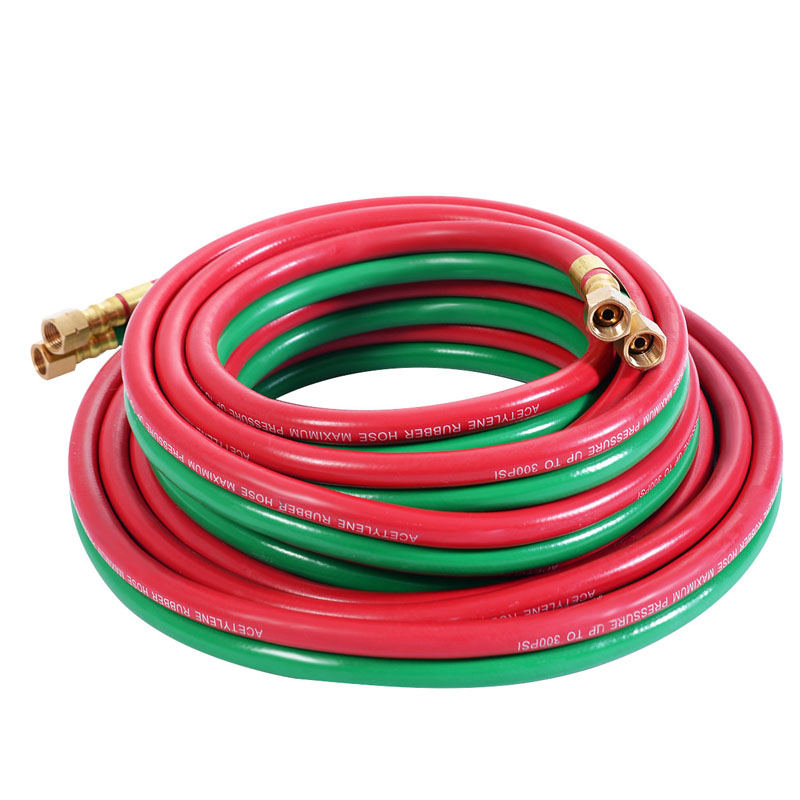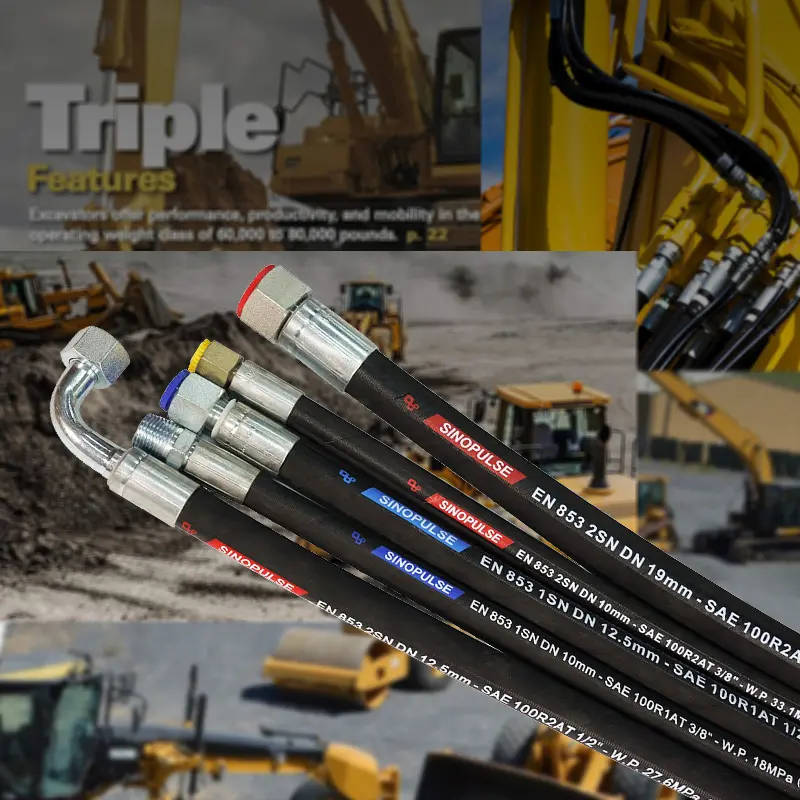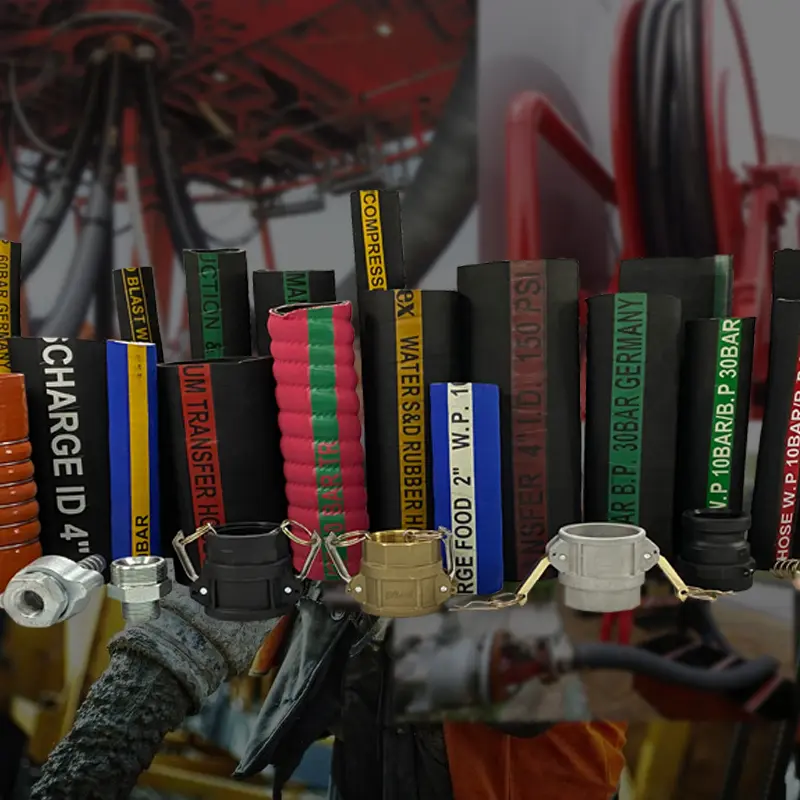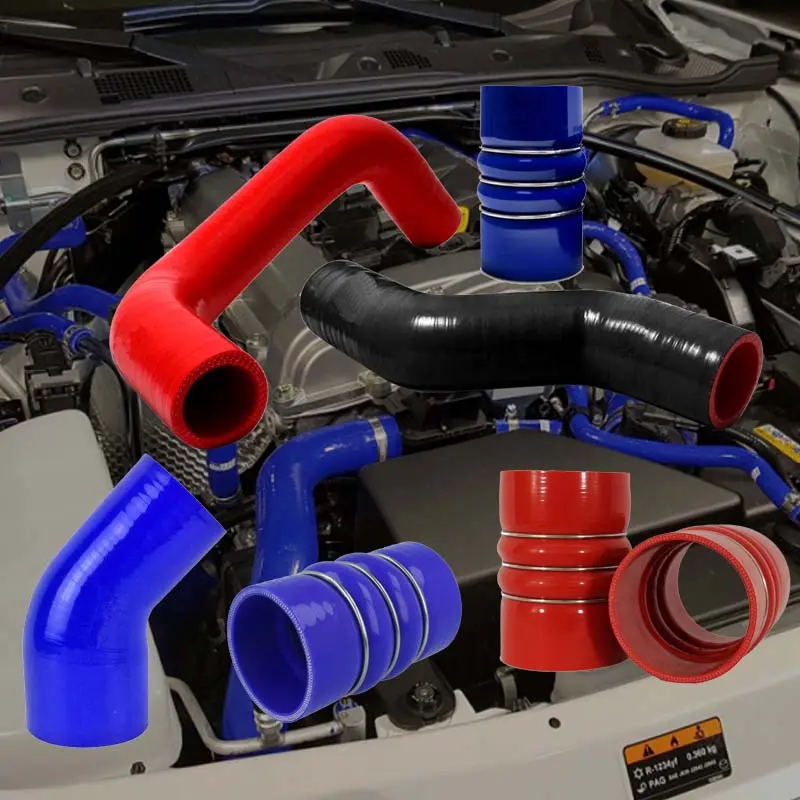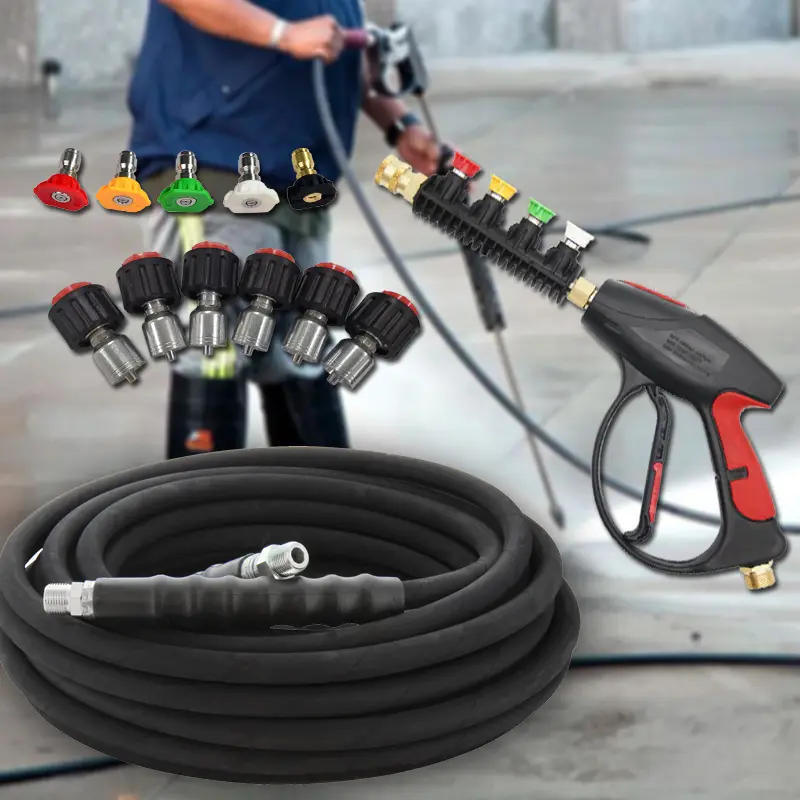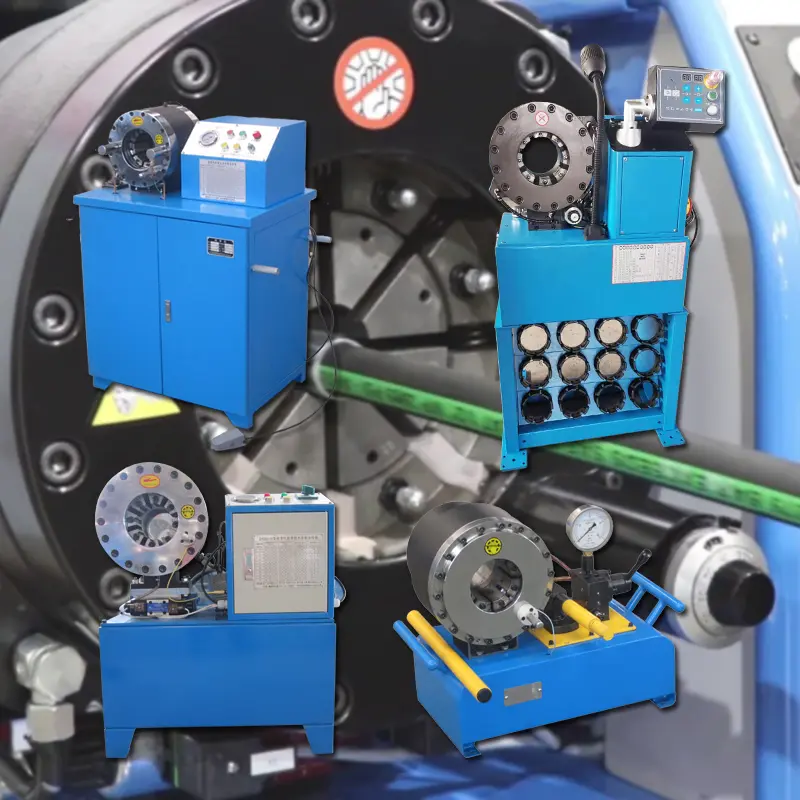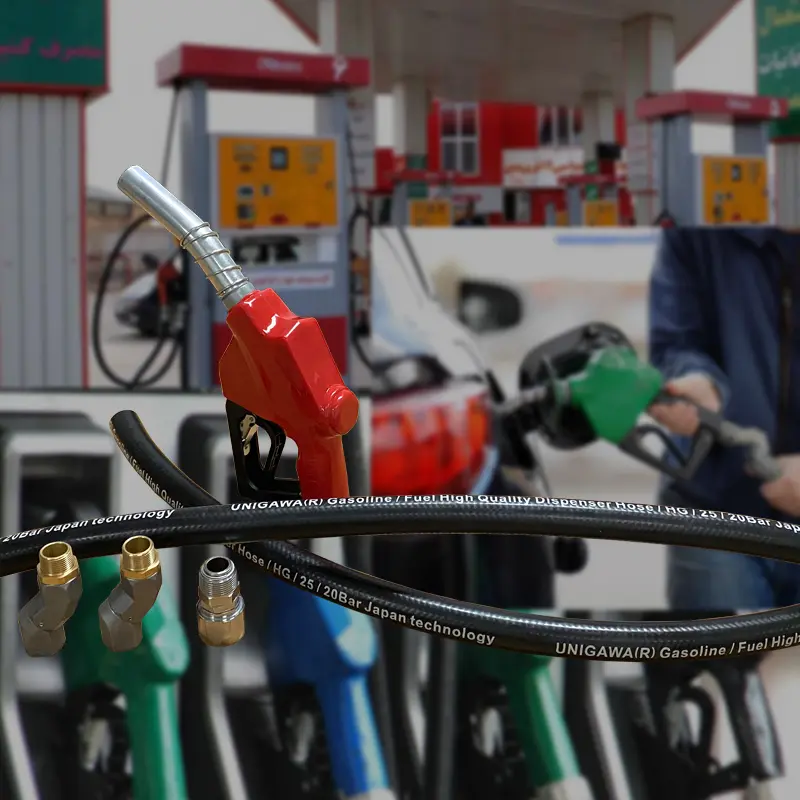The Critical Role of Industrial Hoses in Modern Industries
In today's complex industrial landscape, the efficient and safe transfer of fluids is paramount. From the vast petrochemical refineries to maritime operations and heavy machinery, flexible conduits play an indispensable role. Among these, the fuel oil hose stands out as a crucial component. Engineered for specific demanding applications, these hoses are designed to handle various types of fuel and oil products under challenging conditions, ensuring operational continuity and safety. Their resilience against corrosion, abrasion, and high pressures makes them a preferred choice for critical fluid transfer systems where reliability cannot be compromised. As industries evolve, the demand for more durable, efficient, and compliant hose solutions continues to grow, driving innovation in material science and manufacturing processes.
This article delves into the technical intricacies, application versatility, and strategic importance of the Fuel Oil Rubber Industrial Hose 20Bar /300psi. We will explore key industry trends shaping the market, provide a detailed look at its technical specifications, elucidate the advanced manufacturing processes involved, and highlight its distinct advantages. Furthermore, we will present real-world application scenarios, offer insights into manufacturer selection, and address common inquiries to empower B2B decision-makers with comprehensive knowledge for optimal procurement and operational efficiency.
Industry Trends & Market Dynamics for Fuel Oil Hoses
The global market for industrial hoses, particularly those designed for fuel and oil transfer, is experiencing significant shifts driven by several key trends. Increased environmental regulations are pushing manufacturers towards more eco-friendly materials and production processes, reducing emissions and enhancing chemical resistance. There's a growing demand for hoses with superior pressure ratings, such as the 300psi hose, capable of handling higher operational stresses in demanding environments like deep-sea oil exploration or high-pressure fuel injection systems. Automation and smart manufacturing are transforming production lines, leading to greater consistency and quality in products like the fuel oil hose.
Digitalization also plays a role, with some hoses incorporating IoT sensors for real-time monitoring of pressure, temperature, and wear, enabling predictive maintenance and extending service life. Geographically, growth is concentrated in emerging economies with burgeoning industrial sectors, while developed markets focus on replacing aging infrastructure with more advanced, durable solutions. The petrochemical, marine bunkering, and transportation sectors remain the primary drivers, with a consistent need for reliable oil discharge hose and oil suction pipe solutions. Forecasts suggest a steady compound annual growth rate (CAGR) for the industrial hose market, emphasizing the continuous demand for high-performance fluid transfer components.
Technical Parameters & Specifications: Fuel Oil Rubber Industrial Hose
The performance of a fuel oil hose is defined by its precise technical specifications, ensuring suitability for various industrial applications. Our Fuel Oil Rubber Industrial Hose 20Bar /300psi is engineered to meet rigorous international standards, offering exceptional durability and operational safety. Key parameters include its working pressure, typically rated at 20 bar (300 psi), which indicates its capacity to withstand continuous fluid flow at this pressure without deformation or failure. The burst pressure, significantly higher, provides a crucial safety margin. Temperature range is another critical factor, with these hoses designed to maintain integrity across a broad spectrum, from extreme cold to high heat, common in engine rooms or industrial processing. Material composition, including the type of synthetic rubber for the inner tube and outer cover, along with reinforcement materials, dictates resistance to petroleum products, ozone, and abrasion.
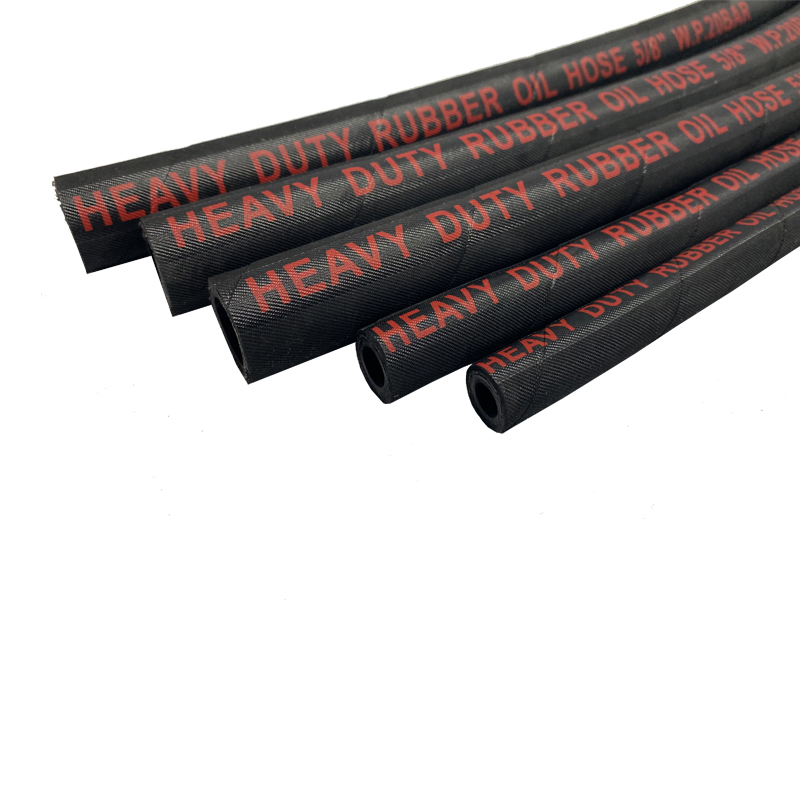
Below is a detailed table outlining typical specifications for a high-performance fuel oil hose, emphasizing features that ensure long-term reliability and compliance with industry benchmarks.
| Parameter | Specification |
|---|---|
| Product Name | Fuel Oil Rubber Industrial Hose |
| Working Pressure | 20 Bar / 300 psi |
| Burst Pressure (Min.) | 60 Bar / 900 psi (3:1 Safety Factor) |
| Temperature Range | -40°C to +100°C (-40°F to +212°F) |
| Inner Tube Material | Black, smooth NBR (Nitrile Butadiene Rubber), oil resistant |
| Reinforcement | High-tensile synthetic textile cord (multiple plies) |
| Outer Cover Material | Black, smooth SBR/EPDM (Styrene Butadiene Rubber / Ethylene Propylene Diene Monomer), abrasion & weather resistant |
| Applicable Fluids | Diesel fuel, gasoline, hydraulic oil, lubricants, kerosene |
| Standard Compliance | ISO 1436, SAE J517 (where applicable), EN 853 |
| Typical Lifespan | 5-10 years under proper usage and maintenance |
This data highlights the robust design principles applied to ensure that each fuel oil hose delivers consistent, reliable performance even in the most demanding industrial settings.
Manufacturing Process & Quality Assurance
The manufacturing of a high-quality fuel oil hose is a meticulously controlled multi-stage process, designed to ensure material integrity, structural strength, and long-term performance. It begins with the selection of premium raw materials, primarily specialized synthetic rubbers like Nitrile Butadiene Rubber (NBR) for the inner tube due to its excellent oil resistance, and SBR/EPDM blends for the outer cover for superior abrasion and weather resistance. The reinforcement layers typically consist of high-tensile textile cords or steel wire spirals, strategically chosen to provide the required pressure rating, such as for a 300psi hose.
The core manufacturing steps include:
- Inner Tube Extrusion: Oil-resistant synthetic rubber compound is extruded through a die to form a seamless, precise inner tube, critical for preventing fluid permeation.
- Reinforcement Layer Application: Multiple plies of high-strength textile braids are precisely wound or spiraled around the inner tube using advanced braiding or spiraling machines. This layer provides the necessary burst strength and pressure resistance. For heavy-duty oil suction pipe applications, steel wire reinforcement might be incorporated.
- Outer Cover Extrusion: A durable outer cover is extruded over the reinforcement layer, protecting the hose from external damage, environmental factors like UV radiation, and abrasion.
- Vulcanization (Curing): The assembled hose is subjected to controlled heat and pressure in a vulcanizer. This chemical process cross-links the rubber polymers, enhancing the hose's elasticity, strength, and durability, permanently bonding all layers together.
- Finishing & Testing: After cooling, hoses are cut to specified lengths, branded, and subjected to rigorous testing. This includes hydrostatic pressure testing (to ensure compliance with working and burst pressures), impulse testing for fatigue resistance, flexibility testing, and precise dimensional checks. Compliance with standards like ISO 1436 and ASTM D380 is verified at this stage.
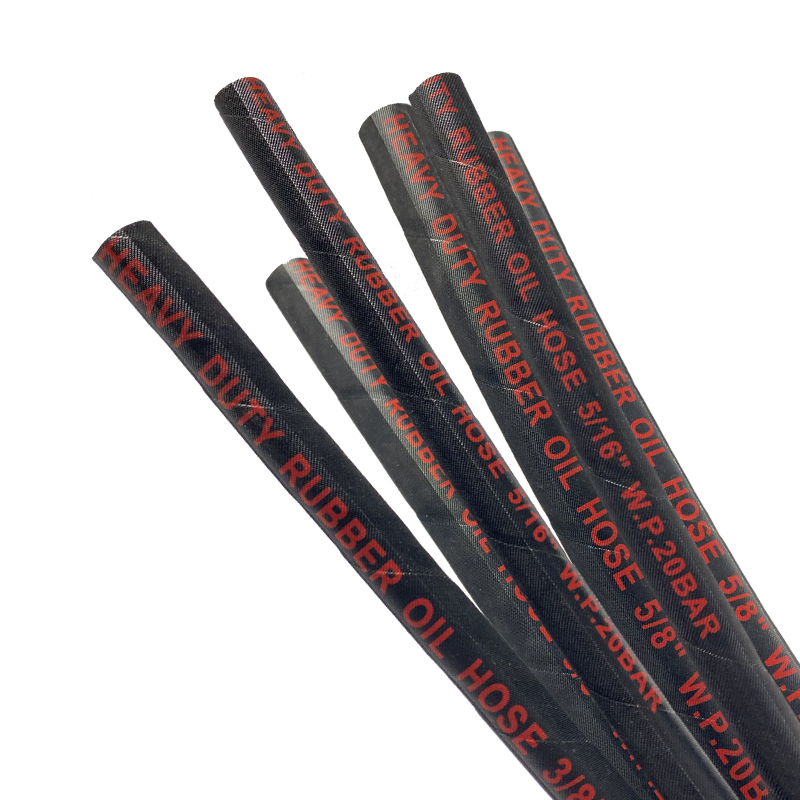
Adherence to international standards such as ISO 9001 for quality management systems and specific product standards like those from SAE and EN ensures that every fuel oil hose delivered meets the highest benchmarks for performance and safety. This meticulous approach guarantees products that are not only robust but also consistently reliable, offering an extended service life and superior resistance to degradation in corrosive environments.
Key Technical Advantages of Fuel Oil Rubber Industrial Hose
The superior design and manufacturing of the Fuel Oil Rubber Industrial Hose 20Bar /300psi offer several distinct technical advantages critical for B2B applications:
- Exceptional Fluid Compatibility: The NBR inner tube provides outstanding resistance to a wide range of petroleum-based products, including gasoline, diesel fuel, lubricating oils, and kerosene. This prevents material degradation, swelling, and cracking, which are common issues with lesser-quality hoses, ensuring the integrity of the transferred fluid and the longevity of the hose.
- High-Pressure Capability: With a working pressure of 20 bar (300 psi) and a significant burst pressure margin, this 300psi hose is engineered to handle demanding fluid transfer operations without risk of rupture or leakage. This is crucial for maintaining system efficiency and safety in high-pressure pumping or discharge scenarios.
- Durability and Abrasion Resistance: The robust SBR/EPDM outer cover offers superior resistance to abrasion, ozone, weathering, and mild chemical exposure. This makes the fuel oil hose ideal for outdoor use and tough industrial environments where physical wear and tear are significant concerns, extending its operational lifespan.
- Temperature Versatility: Designed to perform reliably across a broad temperature range (-40°C to +100°C), the hose maintains its flexibility and structural integrity in both extreme cold and hot conditions, preventing brittleness or softening that could lead to failure. This versatility minimizes the need for specialized hoses for different climatic zones.
- Safety and Compliance: Manufactured under strict quality controls and tested to international standards (e.g., ISO, EN), these hoses minimize the risk of accidents and environmental contamination. Their robust construction and reliable performance contribute directly to the safety protocols of any operation involving the transfer of flammable or hazardous liquids.
These combined advantages result in a high-performance, cost-effective solution that reduces downtime, enhances operational safety, and provides long-term value for industrial users.
Application Scenarios & Case Studies
The versatility and robust construction of the Fuel Oil Rubber Industrial Hose 20Bar /300psi make it indispensable across numerous industrial sectors. Its ability to safely and efficiently transfer various petroleum products under pressure ensures its widespread adoption in critical applications. Common scenarios include:
- Petrochemical Industry: Used in refineries and processing plants for transferring crude oil, refined fuels, lubricants, and other hydrocarbons between tanks, processing units, and loading/unloading points. The hose's anti-corrosion properties are vital here.
- Marine Bunkering & Shipping: Essential for transferring fuel and lubricants between vessels, barges, and shore-based facilities. The oil discharge hose and oil suction pipe capabilities are critical for safe and efficient bunkering operations, minimizing spills and ensuring regulatory compliance.
- Transportation & Logistics: Employed in fuel trucks, railway tankers, and aircraft refueling systems for rapid and secure transfer of fuels. Its flexibility and durability stand up to constant handling and varying environmental conditions.
- Construction & Mining: Providing fuel to heavy machinery, excavators, and generators on-site. The hose's abrasion resistance and ability to handle high pressures make it suitable for rugged environments. This often includes a hose for oil cooler lines to maintain optimal engine temperatures.
- Power Generation: Used in power plants for fuel delivery to boilers and generators, ensuring a continuous energy supply.
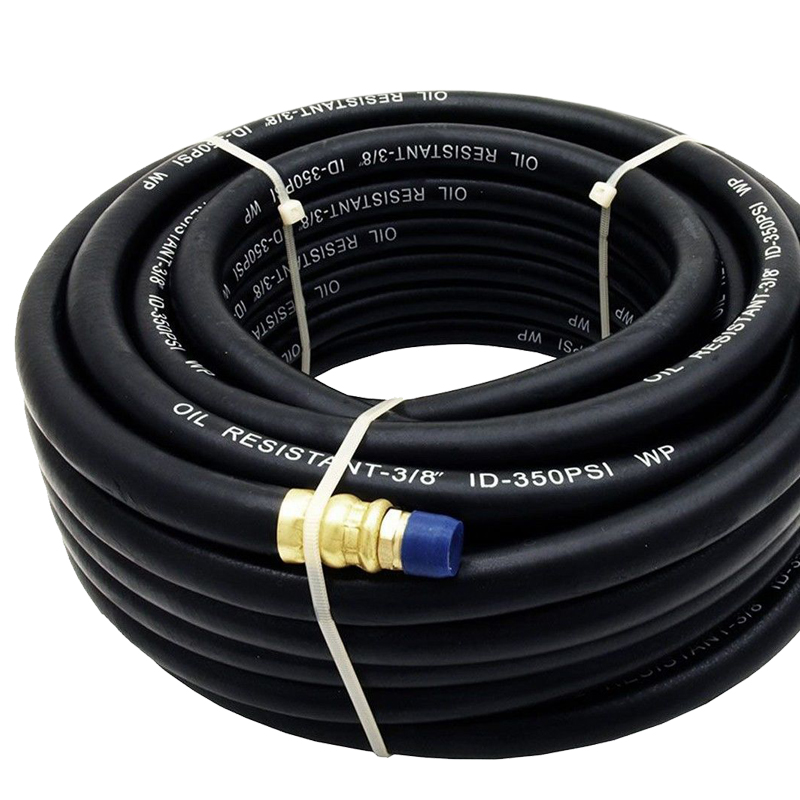
Application Case Study: Maritime Fuel Transfer Optimization
A leading international shipping company faced challenges with frequent hose replacements during bunkering operations due to accelerated wear from saltwater exposure and consistent pressure fluctuations. Their existing hoses had a service life of approximately two years, leading to significant maintenance costs and operational downtime. Upon transitioning to the Fuel Oil Rubber Industrial Hose 20Bar /300psi, they observed a dramatic improvement. The hose’s superior SBR/EPDM outer cover provided enhanced resistance to marine environments and UV, while its robust textile reinforcement ensured stable performance under varying pumping pressures, acting effectively as an oil discharge hose. After three years, the hoses showed minimal signs of degradation, extending their lifespan by over 50% and resulting in a 30% reduction in annual hose-related expenditures and improved bunkering efficiency due to reduced fear of hose failure.
Manufacturer Comparison & Customization Solutions
Selecting the right manufacturer for industrial hoses, particularly a specialized fuel oil hose, involves more than just price comparison. B2B decision-makers must evaluate manufacturers based on their technical expertise, quality control systems, certifications, and capacity for customization. A reputable manufacturer will possess comprehensive testing facilities, adhering to international standards like ISO 9001 and specific product norms such as ISO 1436. Their track record, service longevity, and client testimonials serve as strong indicators of reliability and performance consistency.
While many suppliers offer standard sizes and specifications for a 300psi hose or an oil suction pipe, specialized applications often demand tailored solutions. Leading manufacturers provide extensive customization options, including:
- Specific Diameters and Lengths: Hoses can be produced in non-standard IDs and ODs, and precise lengths to optimize system layouts and minimize waste.
- Custom End Fittings: Integration of specialized couplings and connectors (e.g., camlock, flange, NPT) directly at the factory, ensuring perfect compatibility and reducing on-site assembly time.
- Material Variations: Tailoring inner tube and outer cover materials for enhanced resistance to specific chemicals, extreme temperatures, or unique environmental conditions. This includes specialized compounds for very low-temperature applications or highly abrasive environments.
- Color Coding and Branding: Custom colors for easy identification of different fluid lines or integration of client branding for fleet standardization.
- Reinforcement Customization: Adjusting the number or type of reinforcement plies (e.g., steel wire for vacuum resistance in an oil suction pipe) to achieve specific pressure or suction ratings.
Engaging with a manufacturer capable of delivering these bespoke solutions ensures that your fuel oil hose procurement perfectly aligns with your operational requirements, enhancing efficiency and extending the overall system lifespan.
Ensuring Trust: Quality, Warranty & Support
For B2B buyers, trust is built on a foundation of proven quality, transparent commitments, and reliable post-sales support. When investing in critical components like the Fuel Oil Rubber Industrial Hose 20Bar /300psi, understanding a manufacturer's approach to quality assurance, warranty, and customer service is paramount. Our commitment to excellence is reflected in several key areas:
- Certifications and Compliance: Products are manufactured under strict ISO 9001 certified quality management systems. Each fuel oil hose undergoes rigorous testing to comply with international standards such as ISO 1436 and relevant industry specifications (e.g., for 300psi hose performance). Test certificates and material safety data sheets (MSDS) are available upon request, providing full traceability and transparency.
- Comprehensive Warranty: We offer a standard 12-month warranty on all our industrial hoses from the date of purchase or installation (whichever comes first), covering manufacturing defects and material failures under normal operating conditions. This commitment underscores our confidence in product durability and performance.
- Reliable Delivery Schedules: Understanding the urgency in industrial operations, we maintain optimized supply chain logistics to ensure timely delivery. Standard orders for our Fuel Oil Rubber Industrial Hose typically have a lead time of 2-4 weeks, with expedited options available for urgent requirements. Custom orders may vary based on complexity and volume.
- Dedicated Customer Support: Our technical support team comprises experienced engineers and product specialists available to assist with product selection, application guidance, installation best practices, and troubleshooting. We provide ongoing support to ensure the optimal performance and longevity of your oil discharge hose or oil suction pipe systems.
This holistic approach to product quality and customer satisfaction fosters long-term partnerships and solidifies our position as a trusted supplier in the industrial hose market.
Frequently Asked Questions (FAQ)
Q1: What types of fluids can the Fuel Oil Rubber Industrial Hose safely transfer?
A1: Our fuel oil hose is specifically designed for petroleum-based products. This includes gasoline, diesel fuel, hydraulic oils, lubricants, kerosene, and other mineral oil products. Its NBR inner tube ensures excellent chemical resistance to these fluids, preventing material degradation and ensuring leak-free transfer. It is not recommended for highly corrosive acids, strong alkalis, or certain organic solvents unless specified for a custom solution.
Q2: How does the 300psi rating impact its application?
A2: The 20 Bar (300 psi) working pressure rating signifies that this 300psi hose can safely operate under continuous pressure up to this limit. This makes it suitable for applications requiring moderate to high pressure, such as fuel transfer in large industrial pumps, bunkering operations where significant flow rates are needed, or in hydraulic systems where a reliable fluid conduit is essential. It provides a robust solution compared to lower-pressure hoses, enhancing safety and operational efficiency.
Q3: What maintenance is required for a fuel oil hose to ensure its longevity?
A3: Regular inspection is key. Visually inspect the fuel oil hose for cracks, bulges, abrasions, cuts, or any signs of fluid weeping. Check couplings for tightness and corrosion. Ensure the hose is not kinked or bent beyond its minimum bend radius during operation or storage, as this can weaken the structure. Store hoses in a cool, dry place away from direct sunlight, extreme temperatures, and harsh chemicals. Proper handling and adherence to pressure/temperature limits will significantly extend its lifespan.
Q4: Can this hose be used for both suction and discharge applications?
A4: The standard Fuel Oil Rubber Industrial Hose 20Bar /300psi is primarily designed for discharge applications. For applications requiring significant suction (e.g., drawing fuel from underground tanks), a specialized oil suction pipe with internal wire helix reinforcement is typically recommended to prevent kinking and collapse under vacuum. Please consult with our technical team to determine the most suitable hose for your specific suction and discharge requirements.
Conclusion & Future Outlook
The Fuel Oil Rubber Industrial Hose 20Bar /300psi represents a cornerstone in industrial fluid transfer, offering a blend of robust engineering, material science excellence, and application versatility. Its critical role in ensuring the safe and efficient movement of petroleum products across diverse sectors – from petrochemicals to maritime and heavy industries – underscores the vital importance of selecting high-quality, technically compliant solutions. By understanding the intricate manufacturing processes, adhering to stringent technical parameters, and leveraging the inherent advantages of this specialized fuel oil hose, businesses can significantly enhance operational safety, reduce maintenance costs, and improve overall system reliability.
Looking ahead, the evolution of industrial hoses will continue to be driven by demands for increased environmental compatibility, higher performance under extreme conditions, and integration with smart monitoring technologies. As global industries strive for greater efficiency and sustainability, the role of advanced fluid transfer solutions like the Fuel Oil Rubber Industrial Hose will only grow, solidifying its position as an indispensable component in the modern industrial ecosystem.
References
- ASTM International. (2020). Standard Test Methods for Rubber Hoses. ASTM D380.
- International Organization for Standardization. (2014). Rubber hoses, hydraulic type, textile-wire reinforced, for oil-based or water-based fluids – Specification. ISO 1436:2014.
- SAE International. (2022). Hydraulic Hose. SAE J517.
Product Application









